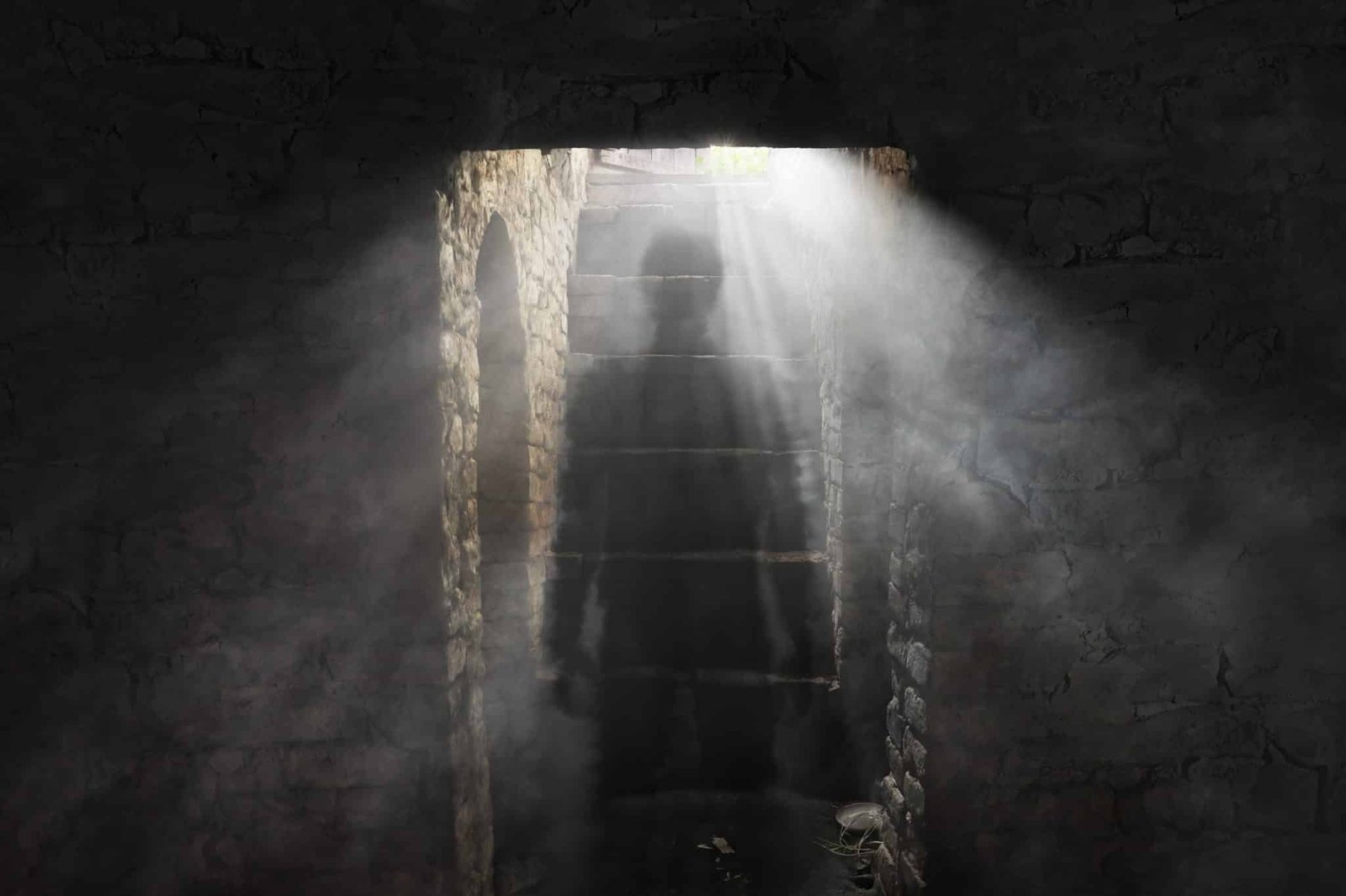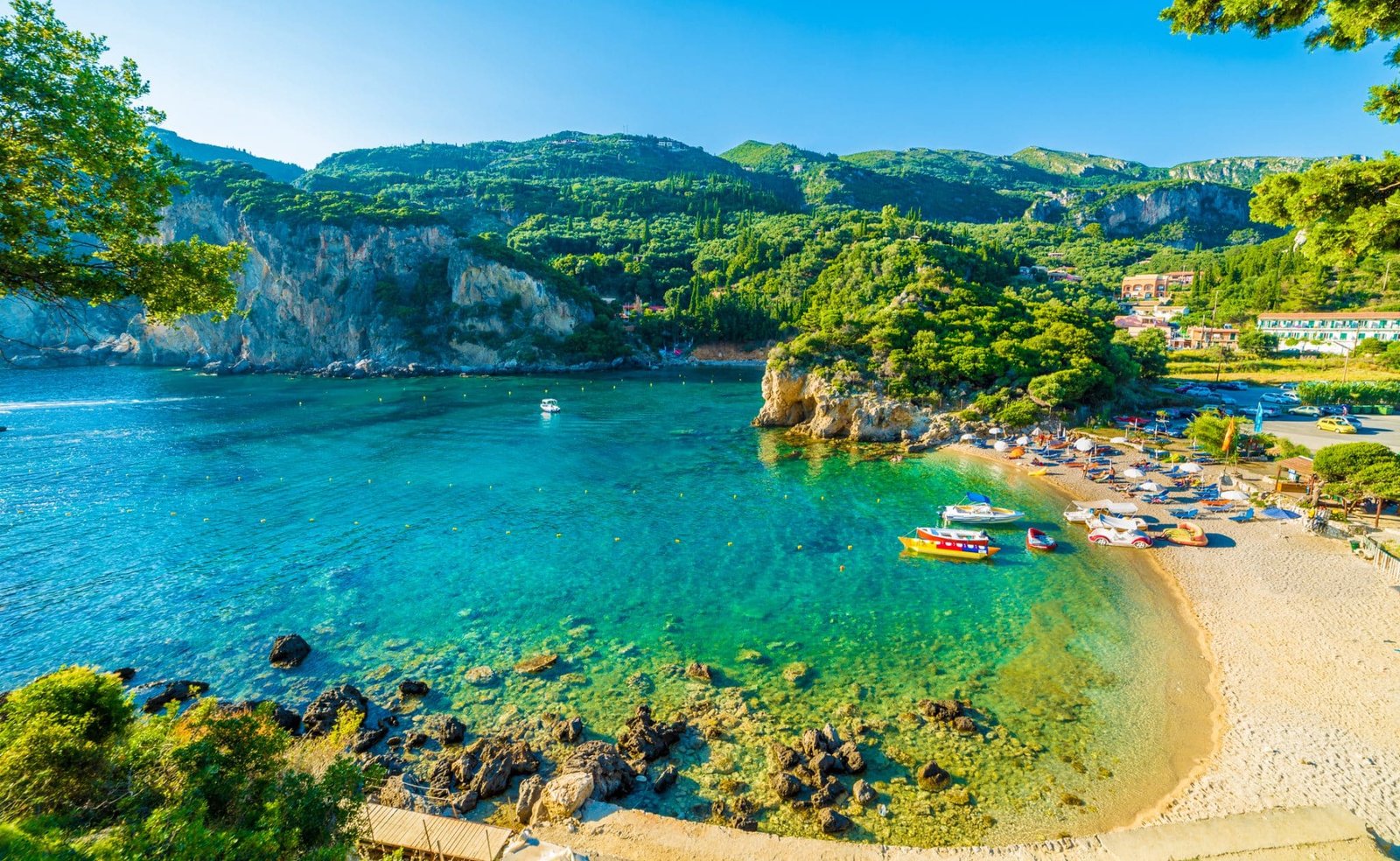The 12 Best Dark Tourism Sites In Denmark: Macabre, Strange & Interesting!
|
Prefer listening over reading? We got you covered!
Getting your Trinity Audio player ready...
|
Denmark is a picturesque and charming country, attracting visitors from all over the world with its beautiful landscapes, rich history, and unique cultural heritage.
However, beyond its more conventional attractions, Denmark is also home to a range of unusual and intriguing destinations that offer a glimpse into the darker side of the country’s history and cultural heritage.
For those interested in “dark tourism,” Denmark offers a wealth of fascinating and often eerie experiences, from haunted castles and creepy catacombs to abandoned amusement parks and mysterious military bunkers.
Whether you’re interested in exploring the country’s rich cultural heritage or uncovering its more unusual and intriguing side, this country really is a must-visit destination that will leave you with memories to last a lifetime.
However, we think normal is sometimes a bit boring, and eventually you’ll start wanting to get away from the usual tourist traps. So why not give Dark Tourism a chance?
For something thrilling and spine-chilling, you’ll see the flip side of Denmark in unforgettable experiences that might just take your breath away.

The Macabre, Strange and Interesting Dark Tourism Destinations of Denmark
1. Tollund Man
It was May 8th, 1950, when the police were brought to a Peat Digging site in Bjældskovdal after a body was found in the bog.
It was so well-preserved that people initially believed it to be from a recent murder. Still, after some investigation, it was discovered that the body belonged to someone who died over 2 millennia ago.
The Tollund Man is the most famous bog body in the world, an immaculately preserved specimen of human life dating back to the Iron Ages. He is suspected of having been part of a human sacrifice ritual and was hanged to appease the gods at the time.
But that’s not what caught the international eye; it was simply that the body, despite its age, was found in such pristine condition scientists could even determine what the Tollund Man ate before he died!
The body is on display at the Museum Silkeborg and, amongst other relics of the past, is a humbling reminder of how society has evolved from primitive practices.
And besides, how many people can say they’ve faced the equivalent of an unwrapped mummy? This is definitely a dark tourism destination you don’t want to miss when in Denmark.
At least this way, we’re not risking the curse of Egyptian Pharaohs. But considering the old gods wanted human sacrifices, we don’t know which would be worse to deal with.
Location: Hovedgårdsvej 7, 8600 Silkeborg, Denmark
Tags: Dark History; Side Show Attraction; Macabre Tourism
2. Dragsholm Castle
Obviously, a castle built in the 13th century will have a lot of history. And considering how backward the methods of our ancestors were, we can guarantee some of it was pretty gnarly.
So it doesn’t shock us in the slightest that Dragsholm is riddled with paranormal activity. But what does surprise us is that the Castle-cum-hotel is an attractive destination for spooky enthusiasts worldwide.
Seriously? Don’t we learn anything from horror movies!? Clearly not. With a rumored 100 ghosts, most of whom came out of the castle’s century-long prison era, we don’t blame thrill-seekers for trying to hunt down Casper and Friends.
And when visiting you might be lucky enough to hear the gibberish ramblings of the Mad Squire, who lost his sanity before his life while imprisoned.
Or you might spot the Woman in White, Celina Bolves, who was entombed within the prison walls as punishment for loving a commoner.
The sad truth is that Dragsholm became the final resting place for many throughout its life, but they’ll be damned if they’re forgotten any time soon.
We’d be pained to visit if the hotel rooms weren’t so luxurious. After all, it’s easier to forget that you just watched the bellboy float through the wall when you’re wrapped in silk sheets.
Location: Dragsholm Alle, 4534 Hørve, Denmark
Tags: Paranormal; Supernatural; Dark History;
3. Blåvand Beach Bunker Mules
Sometimes people like to immortalize the past in a way that makes it seem less… dreadful. One British artist took this to heart when he transformed the Blåvand Beach Bunkers from stoic, rough reminders of WWII into something more playful.
Thousands of bunkers litter the Danish shores, once guardians against attacks from the Jutland Peninsula. They housed soldiers, armed and ready to protect their country from the horrors of WWII.
Now abandoned, the shelves are grotesque reminders of one of the vilest and most tragic times in human history. So in celebration of the 50th Anniversary of WWIIs end, the Danish government commissioned artists to commemorate the occasion.
One such artist decided to turn 4 bunkers on Blåvand Beach into mules by attaching steel heads and tails to the concrete blocks. This wasn’t random, and while it makes them less intimidating, the mule heads are symbolic.
You see, mules cannot breed; they’re infertile. As a result, the artist hopes his choice of the animal reflects a global wish that horrors such as those perpetrated in WWII will never be reproduced.
We can only hope the message sticks, but for now, we’re just going to appreciate the Minecraft-looking art installation and let the deeper meaning sink in later.
Location: Lille Strandvej 22, 6857 Blåvand, Denmark
Tags: Dark History; Disaster Tourism; War Tourism
4. Museum Obscurum
Imagine doing a much-needed renovation to an already creepy and intriguing Occult Museum, only to find a hidden room filled with some of the most bizarre collectibles you can find.
In 2017, this is exactly what happened to the guys working on Cornelius Rödder’s museum. You see, Cornelius was a rather prominent traveler (we love him already) and had a bit of what we call a “Magpie Heart.”
He loved collecting arbitrary items, and his little curiosity cabinet turned into a full-blown menagerie of weird and wonderful finds.
While some people collect shells and smooth stones, Cornelius collected plenty of trinkets and souvenirs ranging from preserved animal specimens to religious relics.
But when the secret room was discovered, so too was a host of cryptozoology specimens. We’re talking about supposed werewolf fangs and fairy blood. The stuff Harry Potter fans would sell a kidney for.
It makes our imagination flutter, and all we can say is it’s hard to be a skeptic of all those fairytale creatures when Cornelius believed in them with all his heart.
So why not lose yourself in the Museum Obscurum, and remind yourself that all those fairytales stemmed from something?
Location: Færgestræde 1a, 4800 Nykøbing Falster, Denmark
Tags: Paranormal; Supernatural; Dark History; Disaster Tourism; War Tourism
5. Lindholm Høje
The coolest thing about Danish history is the Vikings. These people were the stuff of legend that kids around the world grew up hearing of at some point in their lives. Like cowboys and superheroes, Vikings gripped imaginations.
Well, if you’ve ever wanted to get better insight into the real lives of Vikings, one of the best ways to do it is to visit Lindholm Høje.
Archeologists were thrilled to unearth the remains of Viking and Germanic Iron Age civilizations, most notably the burial sites.
In 1000 AD, this particular region of Denmark was plagued by a sand drift, which, much to the delight of giddy historians today, buried villages and graveyards in real-time, leaving behind preserved relics of a much beloved ancient civilization.
Not only that, but the surrounding area also holds a treasure trove of other ruins of vital times in ancient Danish Society, including the Germanic Iron Age.
Lindholm Høje is a beautiful and awe-inspiring reminder of times long forgotten and an insight into how these societies shaped mankind as it is today.
Location: Vendilavej 11, 9400 Nørresundby, Denmark
Tags: Dark History; Grave Tourism
6. Lakesgade
This might seem a weird one to add to the list of Dark Tourism sites in Denmark, but trust us, there’s a method to our madness.
When you look down Laksegade, you’ll be questioning what in the world could make the quiet urban street fall into any category of Dark Tourism destinations in Denmark. Frankly, we don’t blame you.
But, the reality is the street has an interesting past and an unusual visitor that earned the road a poor reputation.
Laksegade was infamous for having the Devil himself on their doorstep. In 1826, a crowd would gather outside a house on Laksegade as the most bizarre and bone-chilling spectacle would take place. While nobody could see what exactly was going on inside, the silent crowds would listen in horror as inhuman growls, laughter, and screams echoed out of the building.
Authorities eventually stepped in, but it was too late, and 210 Laksegade became a city-wide interest. Even inspiring a new catchphrase, “The Devil is Loose on Salmon Street,” which Danish locals use as a colorful way to express a sense of chaos.
Location: Lakesgade, Copenhagen, Denmark
Tags: Paranormal; Supernatural; Curiosity
7. Mønsted Kalkgruber
If you suffer from Chiroptophobia, we’d recommend steering clear of Mønsted Kalkgruber. The nearly 60 kilometers of underground limestone mines have long since been decommissioned. Now, the most human activity they see is from tourists, itching to wander the caves and tunnels.
Otherwise, the caves are home to a few thousand bats!
While the caverns are open year-round for tourists to explore, the museum shuts down its train tours to ensure the bats’ have a peaceful hibernation period.
In all honesty, Mønsted Kalkgruber is a two-for-one deal; not only do you get to explore the World’s Largest Limestone Mine, but you also get to meet with a notorious Halloween icon face-to-face and see the steps taken to ensure their continued survival and conservation.
Location: Kalkværksvej 8, 7850 Viborg, Denmark
Tags: Cave Tourism; Nature Tourism
8. The Forgotten Giants
Denmark has always been a place where fantasies come to life; after all, the father of the modern fairytale, Hans Christian Andersen, was born and raised in Denmark.
So it’s not unusual to see the artistic community feeling inspired by old folklore and fairytales, which is why Denmark is said to be such a place of wonder.
The Forgotten Giants are a beautiful example of this creation and wonder. Artist Thomas Dambo has created six mesmerizing wooden giants scattered throughout the suburbs of Copenhagen to make for an interesting treasure hunt around the city.
They were created and placed in strange, hidden locations to encourage those who know the lore to explore the natural scenery of Copenhagen’s municipalities.
And what better way to explore nature than to walk around forests by yourself, seeking out fairytale creatures?
Location: 2625 Vallensbæk, Denmark
Tags: Weird Tourism; Side Show; Strange Landmark
9. Voergaard Castle
Denmark has quite the knack for spectacular castles, packed to the brim with creepy backstories and ghosts that haunt the halls.
Voergaard Castle is no different, with a history steeped in bloodshed and torment. However, the castle’s reputation as a haunted place has made it a popular destination for ghost hunters and those interested in the paranormal.
According to local legend, the dungeons and torture chambers are still inhabited by the spirits of those who suffered there. Visitors have reported hearing strange noises and feel an eerie presence throughout the castle.
One of the ghosts, Ingeborg Skeel, is synonymous with evil amongst the Danish and is said to be one of the local ghosts haunting the Voergaard Slot.
But aside from the creepy residents, Voergaard is surprisingly beautiful for one of the best dark tourism sites in Denmark. It’s a Renaissance-style castle and plays host to an incredible art collection too. If you can ignore the eyes of the paintings following you around, you’ll also find the atmosphere breathtaking.
Location: Voergård 6, 9330 Dronninglund, Denmark
Tags: Paranormal; Supernatural; Dark History;
10. Hvide Sande Nazi Bunkers
Much like the Blåvand Beach Bunkers, the Hvide Sande Nazi Bunkers are a blatant reminder of the global catastrophe that was WWII.
Shortly after the war began, Denmark, which had claimed to be a neutral state, was experiencing a hostile Nazi takeover, the remnants of which are the Hvide Sande Nazi Bunkers.
They stand out in stark contrast to the soft, golden sands of the beaches they occupy. Some are buried, with little access, while others have been taken over by street artists who have colored the brutalist structures in Graffiti tags (an improvement, in our eyes).
In recent years, they’ve become more symbolic of Denmark’s history. They have seen a boom in tourism as more people become interested in exploring the underground bunkers and learning about Denmark’s role in WWII.
Restoration projects are underway to preserve what’s left of the bunkers. While they’re without guns and equipment, it’s not hard to imagine German soldiers armed to the teeth and ready to face Allied forces; we’re just glad they lost.
And in a way, the Nazi Bunkers can be likened to tombs for the Nazi agenda, buried on Denmark’s coastline.
Location: Ringkøbing, Denmark
Tags: Dark History; Disaster Tourism; War Tourism
11. Medical Museion
As much as humans can be quite squirmish around the thought of seeing parts of the body we don’t usually see, we have got to admit it’s downright fascinating.
The Museoin Medical is an interactive insight into the human body’s weird and wonderful. While their collection of specimens is always on display, the innovative museum occasionally brings in temporary exhibits that explore scientific studies on the human body in a new and interesting way.
From medical anomalies to interactive displays that allow users to experience life as if they were born blind, there’s no end to the imagination of the curators behind the concepts.
Of course, we’ll admit it’s strange to see deformed bones and how our gut behaves with certain emotions. Still, we have got to admit it’s downright incredible that all these crazy, weird, and wonderful things are going on inside us.
Macabre? Yes. Dark and gory? Definitely. But we’d still recommend visiting the Museion Medical for your dark tourism fix when in Denmark.
Location: Bredgade 62, 1260 København, Denmark
Tags: Morbid Tourism; Side Show; Macabre Tourism; Medical Tourism
12. REGAN Vest: The Danish Cold War Museum
Shortly after the end of WWII, the Cold War began. When two military superpowers came head to head with nuclear weapons in tow, the whole world began to shake.
Denmark, while a generally neutral party, was stuck in the middle of the feud. Located close to the European Front Line and with a large NATO military presence, it’s easy to understand why the country was nervous about the war escalating. Especially if the Soviets discovered their role in feeding Western Intelligence information.
Needless to say, they weren’t going to take risks. As a result, Nuclear Bunkers were built in secret to hide the Royals, Government officials, and some lucky public members should the Soviet Union and the USA decide to drop nukes.
This massive secret bunker thankfully remained unused and was eventually turned into a Cold War Museum as a reminder of those uncertain times.
Location: Rold Forest, Northern Jutland, Denmark
Tags: Dark History; Disaster Tourism; War Tourism
Denmark’s Best Dark Tourist Sites: Our Final Thoughts
Denmark is a fascinating and unique destination that offers plenty for a tourist, from its stunning landscapes and charming cities to its intriguing past and rich culture.
The country provides an incredibly diverse array of activities ranging from harmless family-friendly fun to something bound to send shivers down your spine.
After all, traveling is about experiencing something new, so put yourself out of your comfort zone and visit Denmark’s most fascinating Dark Tourism destinations.
We promise they’re not all hair-raising, but they all have one thing in common, they’re unique and definitely don’t make it to the brochure for Kontiki Tours.





